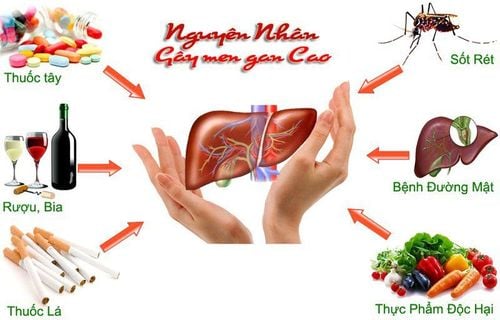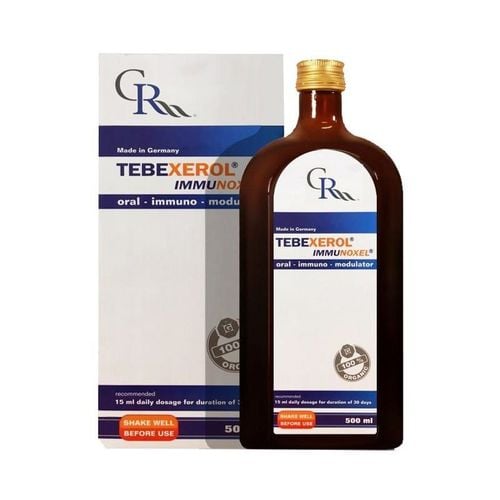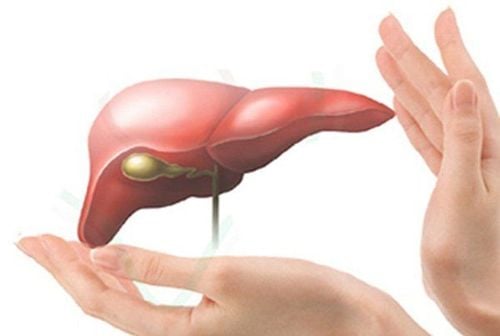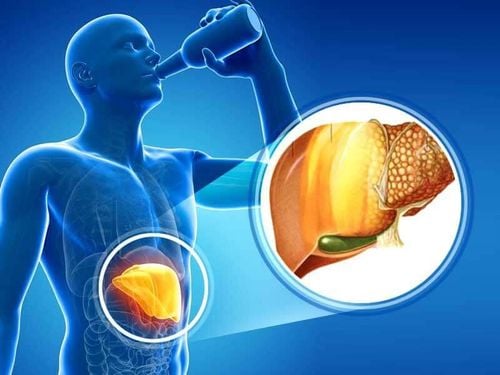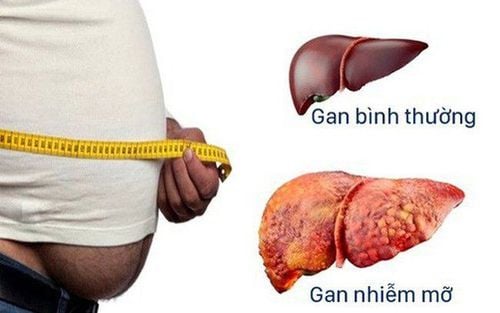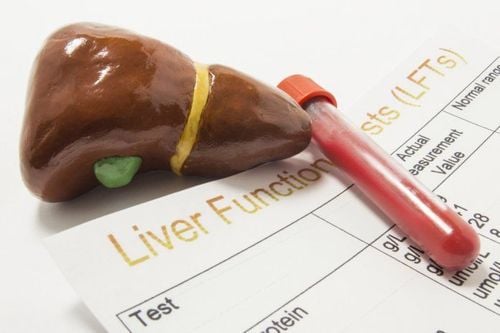This is an automatically translated article.
The article is expertly consulted by Gastroenterologist, Department of Examination & Internal Medicine - Vinmec Hai Phong International General Hospital. The doctor has 27 years of experience in the field of gastroenterology.Currently, nonalcoholic fatty liver disease is the most common cause of elevated liver enzymes. The prevalence of non-alcoholic fatty liver disease is about 35% in Europe and 25% in Asia. Progression of the disease can lead to severe consequences if not diagnosed and treated promptly.
1. What is non-alcoholic fatty liver disease?
Nonalcoholic fatty liver disease is a general term for a variety of conditions that affect the liver in people who drink little or no alcohol. The disease is more and more common in the world, especially in Western countries. In Vietnam, there are no official statistics, but in recent years, domestic studies have shown that the rate of non-alcoholic fatty liver disease tends to increase.The main feature of the disease is that too much fat is stored in the liver cells. Severe cases can cause hepatitis, liver damage similar to heavy alcohol use. Nonalcoholic steatohepatitis can progress to cirrhosis and liver failure.
Nonalcoholic fatty liver disease occurs at any age, but especially in people between the ages of 40 and 50, there is a high risk of developing it due to risk factors such as obesity and diabetes. type 2. The disease is also closely associated with metabolic syndrome.
2. Why is the liver fatty?
The causes of nonalcoholic fatty liver disease are many and unclear. It is not known exactly why some people accumulate fat in the liver, while others do not. Similarly, it is not clear why some cases of fatty liver develop inflammation and progress to cirrhosis.Although fatty liver disease and nonalcoholic steatohepatitis have many causes, they are all related to the following disorders:
People who are overweight or obese, especially abdominal obesity (statistically, 80 - 90% of obese people have fatty liver A high-fat, sweet, sedentary diet People with high blood sugar, diabetes or type 2 prediabetes Increased insulin resistance increases blood triglycerides People have metabolic disorders, high blood fats, especially hypertriglyceridemia Women with polycystic ovary syndrome People with sleep apnea People with hypothyroidism, hypopituitarism... Notably, hepatitis Nonalcoholic steatosis is most common in the elderly, diabetics, and people with abdominal obesity.
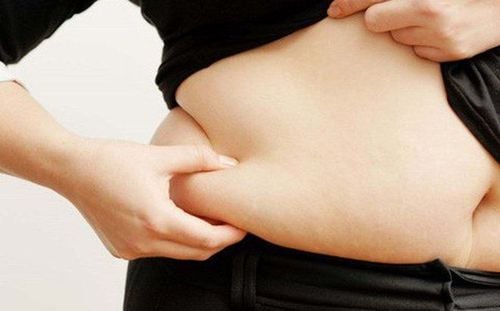
80 - 90% số người béo phì mắc gan nhiễm mỡ
3. Treatment of non-alcoholic fatty liver disease
There is currently no specific treatment for nonalcoholic fatty liver disease, but researchers are looking into whether certain natural compounds could help, such as:Vitamins E and C: vitamin E and other vitamins called antioxidants can help protect the liver, markedly inhibiting the development of liver fat degeneration in experimental studies. Coffee: In some studies of people with nonalcoholic fatty liver disease, coffee drinkers had less liver damage than those who drank little or no coffee. Get vaccinated against hepatitis A and B to help protect you from viruses that can cause more liver damage. For people with cirrhosis caused by nonalcoholic steatohepatitis, the patient can be treated with liver transplant surgery. >>See more: Advances in the treatment of non-alcoholic steatohepatitis - Article written by Master, Doctor Mai Vien Phuong - Gastrointestinal endoscopist - Department of Examination & Internal Medicine - General Hospital Vinmec Central Park International Faculty. Doctor has nearly 10 years of experience in the field of Gastrointestinal Endoscopy.
4. Dietary recommendations
Patients should consider energy restriction and elimination of food ingredients that promote nonalcoholic fatty liver disease:Don't eat processed foods Do not choose high-fructose foods and beverages. Increase the amount of vegetables and fruits: every day patients should eat at least 300g of green vegetables, 200g of fresh ripe fruit. So what fruit should a fatty liver eat? Fruits that should be noted are: lemons, oranges, tangerines, grapefruits, ripe apples... Prioritize choosing oils of vegetable origin (except coconut oil), limiting animal fat (except fish fat). Limit the intake of cholesterol-rich foods such as animal fat, hearty foods, viscera, animal skins, egg yolks, animal brains and livers... Some foods are considered "medicines" that have an effect. Good use of "fat loss" such as: soybean oil, peas, fresh ripe tomatoes, yellow peppers, hot vegetables, celery, lettuce, garlic, bananas (banana flowers), green tea, flowers .. .

Trái cây nên lưu ý đó là: chanh, cam, quýt, bưởi, táo chín...
5. Lifestyle changes to support the treatment of non-alcoholic fatty liver disease
Weight loss is of particular importance in the prevention of nonalcoholic fatty liver disease. If you are overweight or obese, reduce the number of calories you eat each day and increase your physical activity, reducing cholesterol and triglycerides in your blood. Closely monitor your daily calorie intake. Exercise: try to stay active, at least 30 minutes of exercise most days of the week. Control diabetes: follow your doctor's orders and closely monitor your blood sugar. Protect your liver by not drinking alcohol. Avoid taking drugs that are toxic to the liver. Regular health check-ups 1-2 times/year to detect and treat diseases early, make necessary diagnoses as prescribed by doctors (if necessary) to promptly detect progress. Currently, the ultrasound elastography method of liver tissue is the best method to evaluate the damage in the liver parenchyma and the degree of cirrhosis, helping to diagnose non-alcoholic fatty liver diseases, hepatitis C, infected liver. Alcoholic fat, chronic liver and kidney stasis... . Accordingly, the patient lies on his back, his right hand is placed behind his head, the operator places the transducer on the intercostal skin where the liver biopsy is usually located and presses it with a slight pressure and the test consists of 10 consecutive measurements at the same time. position. The machine will automatically calculate the average value. The results are analyzed by the machine and give specific numbers.The advantage of the technique is that it is non-invasive, easy to perform in patients with obesity, ascites, and can be applied to many different organs.
Please dial HOTLINE for more information or register for an appointment HERE. Download MyVinmec app to make appointments faster and to manage your bookings easily.




